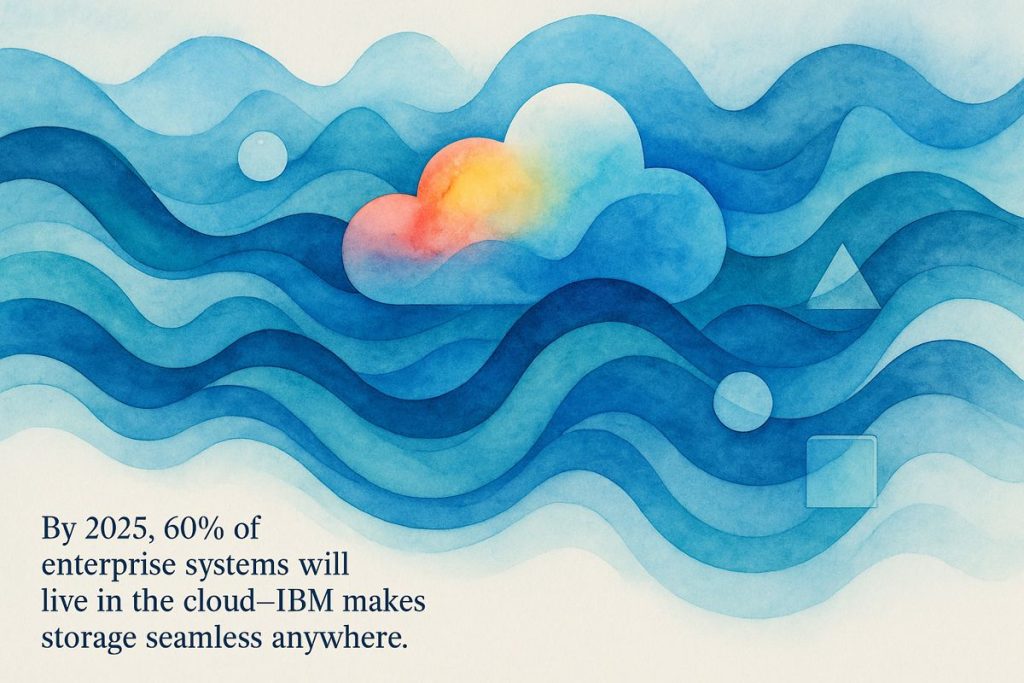IBM’s 2025 storage plan is all about making data easy to move and manage, using cloud-native, container-based, and as-a-service tools. They want storage to just work—fast, secure, and seamless—no matter if your data is in the cloud or your old server room. By using open-source tech like Red Hat OpenShift and Ceph, IBM aims to give customers freedom and flexibility for modern needs, especially AI. The goal is storage that feels invisible and simple, so IT teams can focus on big ideas, not babysitting hardware.
What is IBM’s 2025 enterprise storage strategy?
IBM’s 2025 enterprise storage strategy focuses on cloud-native, containerized, and as-a-service solutions. The plan emphasizes seamless data movement across hybrid and multi-cloud environments, enhanced security and compliance, and leverages open-source technologies like Ceph and Red Hat OpenShift for flexible, software-defined storage tailored to modern workloads and AI demands.
In the Weeds: Why Storage Is Having an Identity Crisis
There’s a faint whiff of burnt espresso in the air as I say this: enterprise storage—IBM’s, in particular—has finally admitted it’s time for a hard reset. (It’s about time, isn’t it?) For years, the company’s portfolio resembled a palimpsest: layer after inscrutable layer, each new product line scribbled over the old, occasionally with a side order of vendor lock-in. But the world has changed, and by 2025, IBM’s strategic overhaul will be impossible to ignore.
The new blueprint? Everything cloud-native, everything containerized, and everything as-a-service—or as close as the zeitgeist will let them get. IBM’s Hybrid Cloud Roadmap for 2025 lays it out in black and white, complete with allusions to AI, regulatory labyrinths, and the perpetual tug-of-war between CapEx and OpEx. There’s a sense of urgency here, almost a caffeinated buzz—the need to make data management as seamless as flipping a light switch, no matter if your data’s parked in a hyperscaler’s cloud or languishing in a basement server room that smells faintly of old rubber bands.
I’ll admit, I once scoffed at the notion that storage would become “invisible infrastructure.” Now I’m less sure. Invisible or not, the stakes are real: compliance, cost, and velocity, all wrestling for the driver’s seat.
Hybrid Cloud: IBM’s Big, Messy Master Plan
If you squint at IBM’s new roadmap, you see a single thesis: modern workloads—especially those gluttonous, AI-driven ones—must flow effortlessly across public clouds, private data centers, and the edge. Friction is the enemy. IBM’s answer is an ecosystem where storage hardware and software are tuned for “generative AI,” regulatory compliance, and data sovereignty, all at once. (A tall order? Absolutely.)
Central to this is security. Advanced embedded security platforms and compliance frameworks are now baked in—think AES-256, continuous audit trails, and privacy controls that would make GDPR lawyers weep with joy. Finance? Healthcare? Government? All these domains demand it, and IBM has decided to court them with a paradox: lock everything down, but don’t lock anyone out.
One day last quarter, as I watched a DevOps team at a mid-sized bank try to wrangle their datasets into a new cloud environment, I realized something: what they needed wasn’t a bigger server. They needed storage that could move and morph as fast as their ideas. The look on their faces when the migration actually worked—relief, disbelief—stuck with me. That’s the emotional core of this pivot: the hunger for tools that just get out of the way.
Containerization and Open Source: Ceph and the OpenShift Constellation
Let’s talk containerization. IBM has thrown in its lot with open source, aligning its storage stack with Red Hat’s Red Hat OpenShift and elevating Ceph to a starring role. This isn’t just a branding exercise (though there’s plenty of that); it’s a wholesale shift from monolithic, boxed-in storage to software-defined storage (SDS) that can be spun up (or down) at will. The move finally unifies a historically fractious portfolio—like herding cats, but with fewer scratches.
Ceph’s distributed, hyperspectral architecture means IBM can offer storage that hums along whether you’re running Kubernetes on bare metal, shuffling AI workloads across clouds, or cobbling together edge deployments in a wind-whipped modular datacenter. IBM’s integration with OpenShift puts them in rare company. Microsoft and NetApp have tried similar tricks, but the Red Hat DNA lends IBM’s offering a particular flavor—one that, frankly, smells a bit like freedom. Or at least, a freedom adjacent.
That said, I once tangled with Ceph’s learning curve and ended up in dependency purgatory for two days. Lesson learned: the open road can be bumpy, but the promise of container-native storage still gives me a small thrill. Maybe I’m a glutton for punishment.
The As-a-Service Metamorphosis: Shedding the CapEx Cocoon
Here’s where things get a tad philosophical. IBM is betting big on storage as-a-service (aaS), pushing offerings like IBM Storage Ceph delivered as a fully managed platform. Forget monster up-front hardware bills; welcome to the “pay for what you use” model. It’s not just a financial sleight of hand—moving from CapEx to OpEx can feel like trading a heavy winter coat for a windbreaker. Refreshing, a little risky.
The operational upside is real. With SLAs, automated updates, and cloud-native management portals, IT teams get to focus on actual innovation instead of nurturing ancient NAS appliances in a chilly server closet. IBM’s new as-a-service suite aims to flatten complexity and let organizations scale as their needs (or ambitions) dictate.
I’ll confess: I used to assume aaS was just marketing jazz—until a small biotech startup I worked with dodged a six-figure hardware refresh by switching to managed storage. The relief on their CFO’s face? Priceless. Ugh, why
